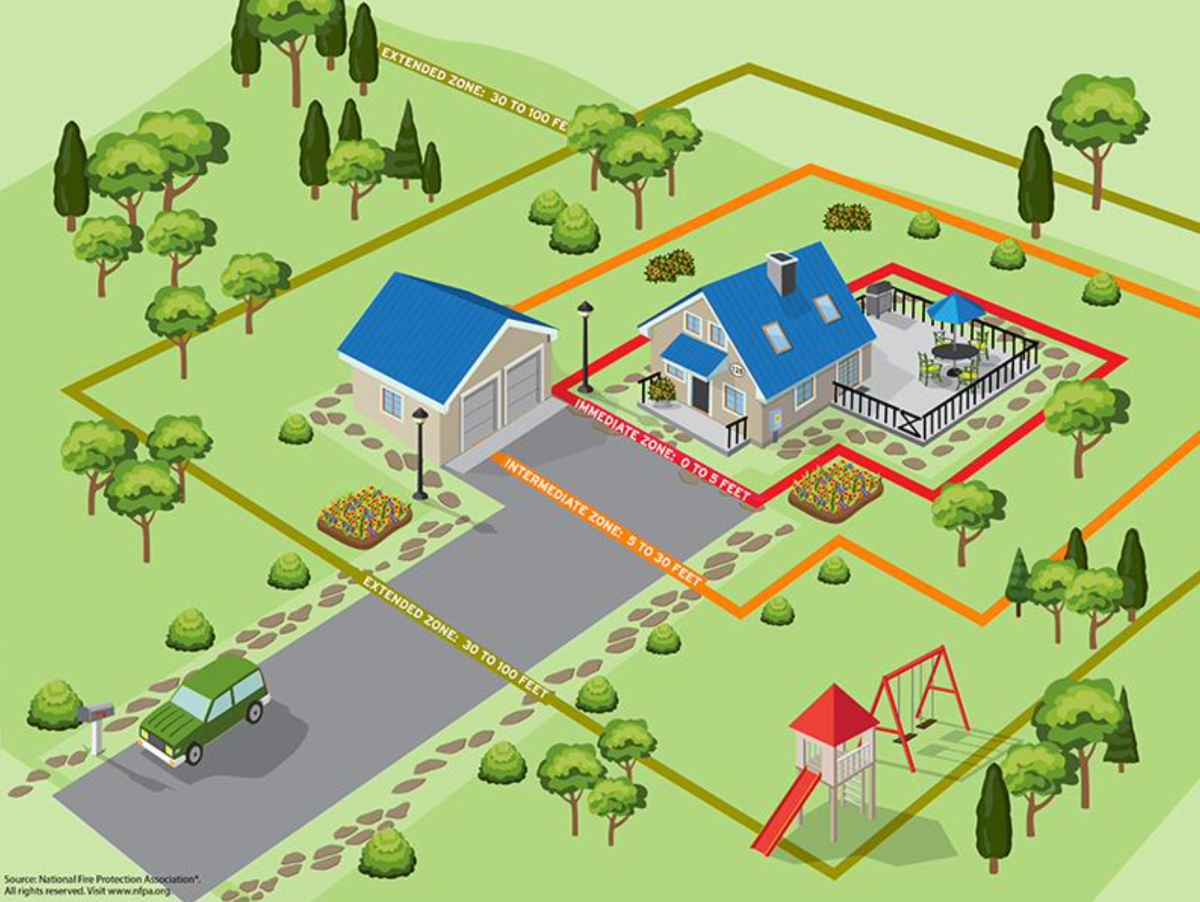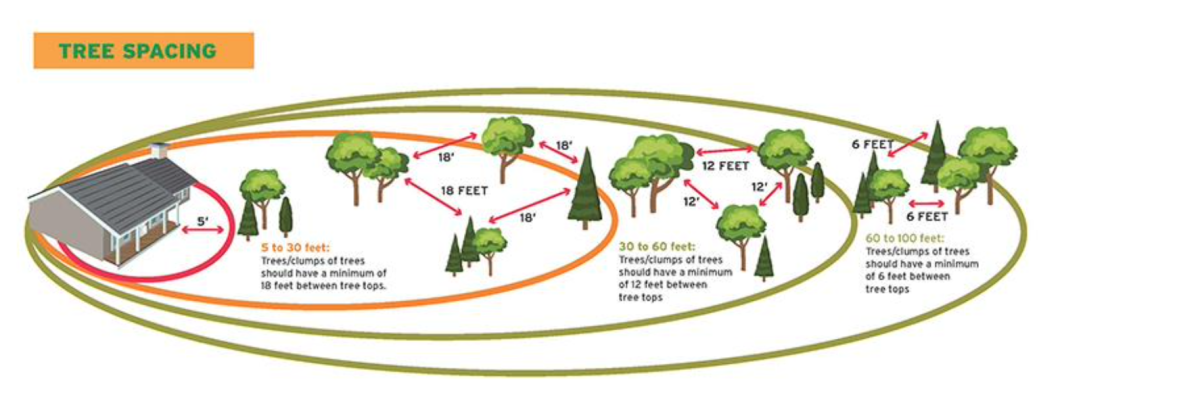
For many years now, the risk of wildfire has had an immense impact on California insurance customer's ability to get coverage. Whether you have been non-renewed or struggled to get a policy in a particular zip code, or had to fall back on the California Fair Plan for coverage, this is a new(ish) reailty that we are all facing together.
More recently we've seen insurance companies requesting proof of defensible space. While this may feel challenging for some, it could actually be what helps you maintain your current coverage in an area that you may otherwise be non renewed due to wildfire risk, or be able to obtain coverage for fire without The California Fairplan. And the best of all, by following the defensible space parameters of your insurance company, you're also protecting your home! We live in a time and place where the risk of wildfire is becoming the new normal. This new collaborative approach is becoming increasingly common and helps to create home spaces that are ultimately safer for homeowners.
Below are the parameters set forth by one of our most frequently used companies, Mercury Insurance. If you have any questions about this process or are facing this exact conundrum, we are always here to talk. Feel free to reach out to your Barber Insurance Agent if you need support.
Immediate Zone
The home and the area 0-5’ from the furthest attached exterior point of the home; defined as a non-combustible
area. Science tells us this is the most important zone to take immediate action on as it is the most vulnerable to embers.
Start with the house itself then move into the landscaping section of the Immediate Zone.
- Clean roofs and gutters of dead leaves, debris and pine needles that could catch embers
- Replace or repair any loose or missing shingles or roof tiles to prevent ember penetration
- Reduce embers that could pass through vents in the eaves by installing 1/8 inch metal mesh screening
- Clean debris from exterior attic vents and install 1/8 inch metal mesh screening to reduce embers
- Repair or replace damaged or loose window screens and any broken windows Screen or box-in areas below patios and decks with wire mesh to prevent debris and combustible materials from accumulating
- Move any flammable material away from wall exteriors – mulch, flammable plants, leaves and needles, firewood piles – anything that can burn
- Remove anything stored underneath decks or porches
Intermediate Zone
5-30’ from the furthest exterior point of the home. Landscaping/hardscaping – employing careful landscaping or creating
breaks that can help influence and decrease fire behavior.
- Clear vegetation from under large stationary propane tanks
- Create fuel breaks with driveways, walkways/paths, patios, and decks
- Keep lawns and native grasses mowed to a height of four inches
- Remove ladder fuels (vegetation under trees) so a surface fire cannot reach the crowns
- Prune trees up to six to ten feet from the ground; for shorter trees, do not exceed 1/3 of the overall tree height
- Space trees to have a minimum of eighteen feet between crowns with the distance increasing with the percentage of slope
- Tree placement should be planned to ensure the mature canopy is no closer than ten feet to the edge of the structure
- Tree and shrubs in this zone should be limited to small clusters of a few each to break up the continuity of the vegetation across the landscape
Extended Zone
30-100 feet, out to 200 feet. Landscaping – the goal here is not to eliminate fire but to interrupt the fire’s path and keep
flames smaller and on the ground.
- Dispose of heavy accumulations of ground litter/debris
- Remove dead plant and tree material
- Remove small conifers growing between mature trees
- Remove vegetation adjacent to storage sheds or other outbuildings within this area
- Trees 30 to 60 feet from the home should have at least 12 feet between canopy tops
- Trees 60 to 100 feet from the home should have at least 6 feet between the canopy tops

For more information, please visit www.NFPA.org/Public-Education/Fire-causes-and-risks/Wildfire or www.readyforwildfire.org
Please see the following checklist for submitting photos of your home and property:
- While facing your home, please take a photo of the front of your home including your front yard.
- While facing away from your home, please take a photo of your front yard.
- While facing the back of your home, please take a photo of the back of your home including your back yard.
- While facing away from the back of your home, please take a photo of your back yard.
- Please take a photo of the left side of your home including the side yard.
- Please take a photo of the right side of your home including the side yard.
Courtesy of Mercury Insurance





